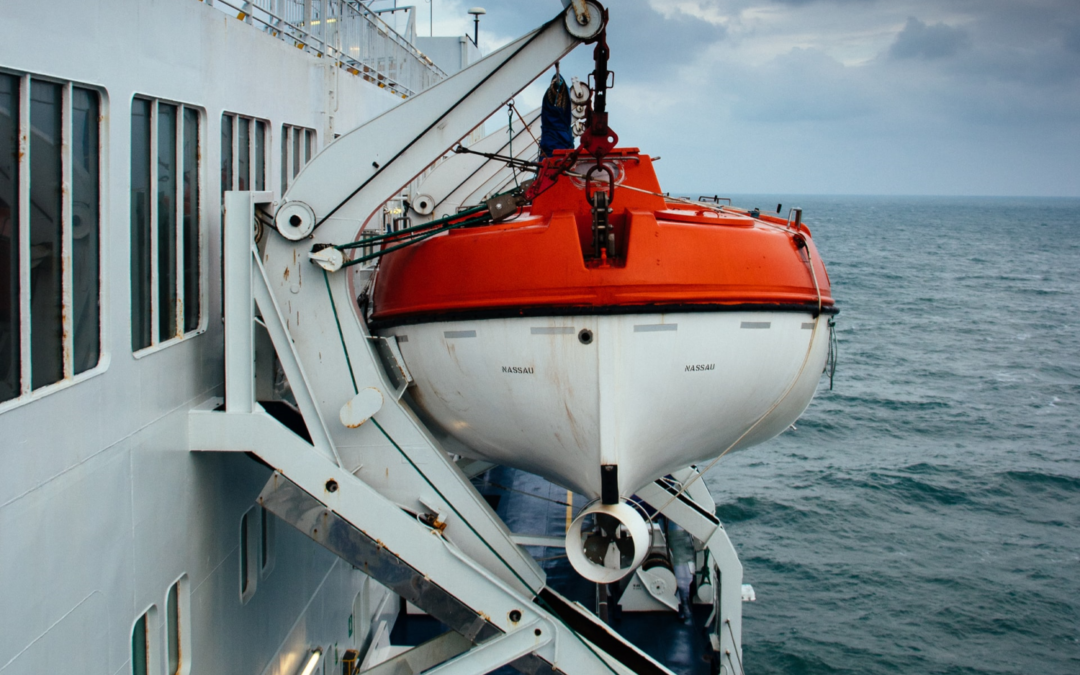IMO Resolution MSC 402(96) adopted on May 19th, 2016 establish a uniform, safe and documented standard for maintenance, thorough examination, operational testing, overhaul and repair of life boats (including free-fall lifeboats), rescue boats and fast rescue boats and its launching appliances.
The following is a list of the top five tips to consider in preparing equipment for examination by a certified service provider qualified personnel.
Make sure that lifeboat fall certificates are still valid and available.
Falls used in launching shall be inspected periodically with special regard for areas passing through sheaves and renewed when necessary due to deterioration of the falls or at intervals of not more than 5 years, whichever is the earlier. A lifeboat falls valid certificate must be available at the time of the inspection even during the planning of the visit. Not having a valid certificate available for inspector review may delay the examination even before it begins. Service providers avoid operating lifeboats without valid falls certificates for safety reasons.
Verifies that lifeboat and launching appliance maintenance is done.
Records of inspections and routine on-board maintenance according to manufacturer manual carried out by the ship’s crew will definitely be inspected by the service provider surveyor. The condition of the boat and its equipment must be in line with the maintenance described in the records. Special attention to the greasing points of the launching appliance under a basic premise (if it has moving parts it must be greased) as well as the cleanliness and tidiness of the interior of the boat, always the first impression is important. Maintenance manuals and associated technical documentation shall be available on board.
Checks the Release gear.
It is very important to check the lifting hooks and their associated structure, in particular the connections to the lifeboat keel. These are occasionally found to be severely wasted. An early verification of the condition of the following parts: devices for activation of release gear, hydrostatic interlock system (where fitted), cables for control and release and hook fastening may reveal damage and deterioration that can be rectified by a specialist prior to the examination to avoid inconvenience during the certification survey. Always remember: No maintenance or adjustment of the release gear shall be undertaken while the hooks are under load.
Ensures that engine, power and propulsion systems are operational.
In many cases the most common observations collected during the annual or five-yearly examination of the lifeboats are related to these systems. Engines that fail to start (either the primary system or the emergency system), Emergency lighting for mustering and abandonment and boat lights out of service, low charge on battery system, clutch system problems and damage associated with the boat’s propeller, especially those with the closed propeller on support keels. A detailed inspection and maintenance of these systems guarantees a satisfactory result during the examination and certification of the survival crafts.
Confirms that there is an adequate view from the steering position.
As per the Life saving appliances code every lifeboat shall be arranged that an adequate view forward, aft and to both sides is provided from the control and steering position for safe launching and maneuvering. This is achieved through windows provided in the control station. In many cases these windows are deteriorated by the exposure to the sun and the marine environment losing their transparency making it difficult to see through them. This can only be corrected by replacing the window screens. Correcting this commonly observed condition is in the best interest of crew safety and lifeboat certification without recommendations for correction.

Finally check the boat’s equipment inventory ensuring that there are no expired supplies on board and you will be ready to certify your vessel’s lifeboat.

